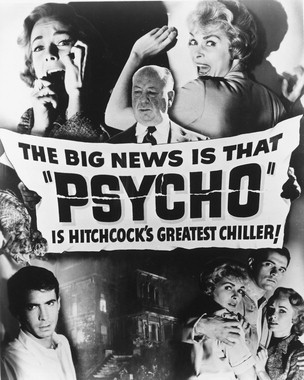- Manipulate the audience mindset.
- "Hitchcock knew why people are drawn to a darkened theater to absorb themselves for hours with images on a screen. They do it to have fun. In the same way people go to a roller coaster to get thrown around at high speeds, theater audiences know they are safe...And, the more fun they have, the quicker they will come back begging for more." The great thing about creating a twisted thriller is that the shock and awe is all parallel to the world of our own, which makes it all the more interesting and intriguing to watch as the plot thickens.
- Play around with camera shots and angles to play around with emotions.
- The eyes are the windows into the soul. Close ups heighten the intensity of whatever the focused character is feeling, while wide shots show more action, and a quick cut from one to another surprises the audience and might leave them in terror if done right. Also, it is fun to play around with low and high angles to establish more dramatic and almost metaphorical meaning behind the frame featured in the shot. "Hitchcock used this theory of proximity to plan out each scene. These variations are a way of controlling when the audience feels intensity, or relaxation. Hitchcock compared this to a composer writing a music score - except instead of playing instruments, he's playing the audience."
- Dialogue is only secondary.
- Just as people in real life don't always verbally express what they are feeling, characters in film often have subconscious thoughts and emotions that can only be expressed through physical expressions. "In other words we don't have pages to fill, or pages from a typewriter to fill, we have a rectangular screen in a movie house."
- Montage and continuity editing is key.
- These techniques allow the audience to view the plot in a circumvent manner. Instead of just seeing the character, we are clued in to what the character is looking at. Instead of just seeing things as they are at the present, a succession of flashbacks or different close up shots reveal things that may be left to the audience's interpretation, which is often more powerful. "In this way you can portray an event by showing various pieces of it and having control over the timing. You can also hide parts of the event so that the mind of the audience is engaged."
- Keep the story simple...not cliche.
- "What is drama, after all, but life with the dull bits cut out..?" Stories that provide the most suspense are not abstract: they are clear, crisp, and concise. Sometimes simplicity is key, yet contrarily, the most memorable characters are those that defy conventions. "These sort of ironic characters make them more realistic to the audience, and much more ripe for something to happen to them... They surprise you at every step of the plot."
- Suspense is information...with a surprise and a twist on the side.
- According to Hitchcock, the master himself, suspense is nothing without informing the audience first. Even so, "once you've built your audience into gripping suspense it must never end the way they expect. The bomb must never go off! Lead them in one direction and then pull the rug out from under them in a surprise twist."
So there ya have it folks! If Hitchcock is the master, then our production team is an apprentice doing our best to bring his elements of suspense to our own original film...especially in the introduction. Will we succeed? Who knows?! but hopefully we do... All we can be sure of is, "When scenes are built around dramatic tension, it doesn't really matter what the story is about. If you've done your job...the audience is still glued no matter what." Stay tuned!
http://borgus.com/hitch/hitch2011.htm
Film Techniques of Alfred Hitchcock - suspense, camera angles, style, editing, basics. (2004, June 1)
Retrieved March 13,2015 from http://borgus.com/hitch/nitch2011.htm
Film Techniques of Alfred Hitchcock - suspense, camera angles, style, editing, basics. (2004, June 1)
Retrieved March 13,2015 from http://borgus.com/hitch/nitch2011.htm





No comments:
Post a Comment